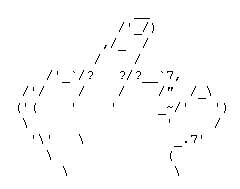
Origen de un feo gesto
Circulo por la red a finales de 1999. Envío de Norman Narotzky
Puede que todo sea una invención... Al fin y al cabo, el dedo medio extendido, y los de la lado plegados es una representación verosímil de los genitales masculinos. Cuando yo era pequeño, lo llamábamos "un naipe": "¡Toma un naipe!", vaya usted a saber por qué...
¡Ah! El dibujo estilizado procede del email originario, y es un ejemplo notable de lo que se conoce como ASCII art.

Giving the Finger
Before the Battle of Agincourt in 1415, the French, anticipating victory over the English, proposed to cut off the middle finger of all captured English soldiers. Without the middle finger it would be impossible to draw the renowned English longbow and therefore be incapable of fighting in the future.
This famous weapon was made of the native English Yew tree, and the act of drawing the longbow was known as "plucking the yew" (or "pluck yew").
Much to the bewilderment of the French, the English won a major upset and began mocking the French by waving their middle fingers at the defeated French, saying, "See, we can still pluck yew!
PLUCK YEW! Over the years some 'folk etymologies' have grown up around this symbolic gesture. Since 'pluck yew' is rather difficult to say (like "pleasant mother pheasant plucker", which is who you had to go to for the feathers used on the arrows for the longbow), the difficult consonant cluster at the beginning has gradually changed to a labiodental fricative 'F', and thus the words often used in conjunction with the one-finger-salute are mistakenly thought to have something to do with an intimate encounter. It is also because of the pheasant feathers on the arrows that the symbolic gesture is known as "giving the bird".
And yew thought yew knew everything!
Última versión, 2 de mayo del 2000
A la portada de los insultos